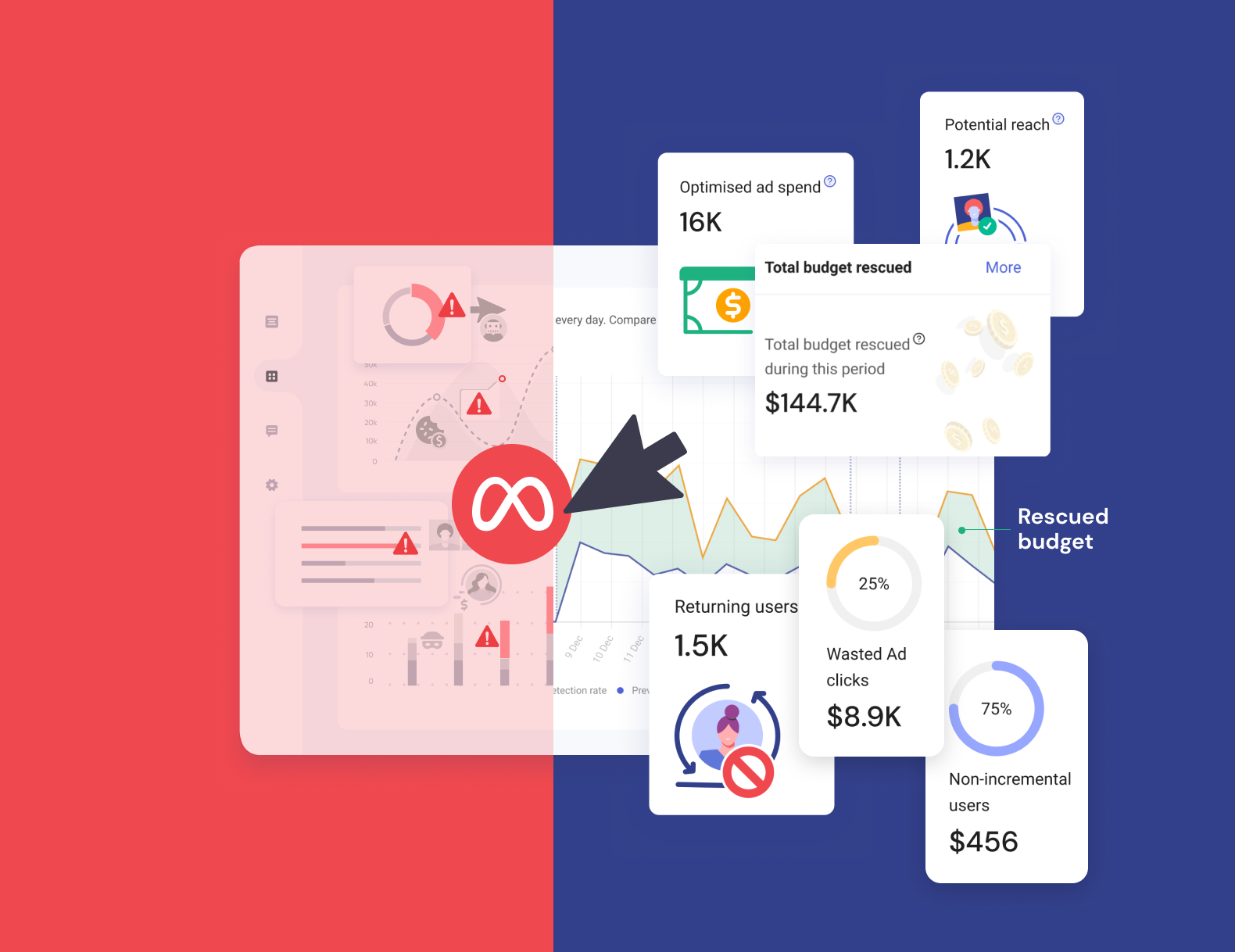Six tips to get the most from your Google Performance Max campaigns

After two years with our collective head jammed under the bonnet of Google’s Performance Max while we developed our new anti-ad fraud solution, it’s fair to say we’ve developed a pretty clear idea of what works. Performance Max campaigns utilise the entire Google Ads inventory, allowing advertisers to access platforms like YouTube and Gmail in a single initiative. TrafficGuard’s Aaron Chambers lets you in on all the secrets…
Current State of Performance Max
We’re a few years on from the launch of Google’s Performance Max (or PMax) technology, and the chances are by now that you will have at least a passing acquaintance with what it is, and what it does (and doesn’t) do.
We’ve been quite critical of PMax in the past, but as AI and machine learning continue to dominate the tech headlines, one thing’s for certain: it’s here to stay whether we like it or not. Performance Max is a distinctive feature of Google Ads that combines various ad formats and utilises automated bidding strategies to enhance conversions across Google’s platforms.
With that in mind, it makes sense to be getting the most you possibly can from your campaigns. In my role as marketing manager at TrafficGuard, I regularly speak to clients who are confused about the benefits PMax can bring, which is what inspired this piece in the first place. Originally it was five tips but they just kept coming…
Performance Max campaigns can significantly impact your overall Google Ads account, so it's crucial to monitor conversion metrics and understand how these campaigns integrate with your broader advertising strategy.
Additionally, Performance Max can affect other Google Ads campaigns, especially branded search campaigns, and it's important to understand this interplay to manage your ad strategy effectively.
1. Be very clear on your Performance Max structure and campaign goals from the outset
Put simply, this will make it easy to identify any issues as and when they occur. The ‘black box’ nature of PMax can make tracking the sources of ad clicks tricky, especially when considering the impact on existing search campaigns. Performance Max campaigns are designed to complement traditional keyword-based search campaigns, enhancing the overall advertising strategy. Expert marketers like yourself may spot patterns faster and gain deeper insights into specific actions before Google’s algorithm can, so it pays to make sure you’re making your life as easy as possible from the off.
(For maximum making your life easy, TrafficGuard’s Performance Max Solution breaks open the mysterious black box for you, but we’ll come back to that)
When you’re setting up your Performance Max campaigns, all of your assets will go into an asset group; basically, a set of creatives that will be used to create an ad depending on the channel it’s being served on. A couple of quick tips on this:
It is crucial to review the final URL within automatically created assets to ensure they direct traffic to the most relevant pages.
Best Practices for Structuring Asset Groups:
- Organise around a theme: Similar to how you organise your ad group, organise your asset groups around a common theme, whether that’s by product, service, or target audience category
- Match user search intent: Ensure assets match search terms to meet customer needs better; the more considered your structure, the more relevant your assets will be to user search terms, and what it is your customers are looking for
Which brings us neatly to our next point:
2. Make sure your creative assets are optimised for best performance
Think of this as a chain reaction: the more assets you supply to Performance Max, the easier it is for Google’s algorithm to display your ad in the right format, on the right channel, and to the right target audience within the Google network. Using Performance Max primarily for conversion objectives is crucial, as it optimises campaigns based on user behaviour and intent.
So really you’re doing yourself a favour with this one - you can thank me later.
Types of creative assets to include:
- High-quality images: A selection of diverse and relevant images, in good-quality resolution. Use as many as possible in different formats (landscape/portrait/square). Including social proof (such as reviews) always helps, as does using images to highlight the unique benefits of your product.
- Compelling text: Again, use as many assets as you can, to allow Google to mix and match for the best combinations. Messaging should be clear and concise and include CTAs where appropriate. Using dynamic values will ensure your assets are relevant for everyone and will match search commands as effectively as possible.
- Interactive content: Experiment with different formats like videos and carousels, and vary the lengths of video content. Don’t forget to include a thumbnail
3. Add your own videos
While we’re on the subject of assets… If you don’t add your own video to your Performance Max asset group, then Performance Max automation can generate video from the assets in your asset group so that all channels are covered. In reality, this is basically a slideshow, accompanied by music selected by the system.
Assuming you want to have influence on the branding, structure and appearance of your video (and I’m assuming you most definitely do) then it’s absolutely worth creating video content of your own. Performance Max allows advertisers to manage ads across multiple Google platforms using a single campaign, simplifying the ad management process.
Tips for creating effective video content
- Brand consistency: Ensure the video aligns with your brand’s voice and style. Use audio if possible, and experiment with different sizes and aspect ratios. Don’t forget to include a thumbnail.
- Clear messaging: Communicate your message within the first few seconds. Try and incorporate the unique selling points of your brand.
- CTA: Include a strong and clear call to action.
4. Add Audience Signals
By understanding and adding audience signals to your Performance Max campaigns you can help improve your ads’ relevance and effectiveness by tailoring them to those audiences most likely to be interested.
The transition from traditional local campaigns to the new Performance Max campaigns brings enhanced features and capabilities specifically designed for retailers and businesses with physical store locations.
How audience signals work:
Unlike a traditional campaign where you would tell Google exactly who you want to target, audience signals are only a starting point; once Google’s algorithm starts gathering data, it will branch out beyond your signal to show your ads to people who exhibit behaviour that suggests they are likely to convert.
Bonus tip: use audience lists as signals to speed up the machine-learning process
5. Add brand exclusions
Performance Max loves to take credit for branded search conversions (that’s traffic which would have converted anyway). Managing branded search campaigns is crucial to ensure that these profitable campaigns continue to perform optimally. People who are actively searching for your company name and then converting have clearly had interactions previously which made their decision. To prevent PMax from cannibalising existing search campaign efforts, it is important to exclude brand terms as negative keywords. This way, when PMax claims these conversions as its own, your data doesn’t get skewed. Performance Max campaigns employ machine learning to enhance ad performance, optimising bids and placements in real-time.
Best practices for brand exclusions:
- Exclude branded conversions: Excluding these conversions will mitigate any skewed data in your results.
- Improve data accuracy: Separating branded and non-branded traffic on PMax enhances data reliability and offers clearer insights into Google Shopping performance.
- Optimise performance: Align goals and optimise performance for both brand and non-brand traffic.
6. Keep an eye on your advertising dollars
Back to that black box. Advanced machine learning is all very well and good but in my experience, marketers want to know exactly where their ad spend is going and exactly where their web traffic is coming from.
It is crucial to set appropriate conversion values to enhance campaign performance, ensuring that your Performance Max campaigns are optimised to drive either conversions or conversion value based on your goals.
Transparency is at the heart of everything we do at TrafficGuard, so we’ve spent the past two years researching, planning and engineering a complete Performance Max solution that offers transparency, data accessibility, and control over your advertising strategies in a way that Google simply doesn’t offer out of the box. The strategic use of Performance Max for conversion objectives is best suited for advertisers with adequate conversion data, and including video assets can significantly boost campaign success.
Key Features of TrafficGuard’s Performance Max Solution:
- Deep dive analysis: We offer a deep dive into your ad campaigns, ad groups, keywords and ads. Detailed reporting allows you to see exactly where and how invalid traffic is affecting you - and what you can do to improve
- Visibility and transparency: You’ll enjoy transparency for every ad engagement, and we’ll ensure invalid engagements are identified and explained so you can maximise campaign performance
- Customisable prevention: Ensure every click counts: TrafficGuard allows you to tailor invalid traffic prevention measures to the unique needs of your campaign
Ready to take your Performance Max campaigns to the next level
Explore TrafficGuard's PMax Solutions to get started. Through a combination of comprehensive analytics and cutting-edge audience technology, it will illuminate the ‘black box’ of PMax to improve your campaign optimisation and help you achieve your conversion goals.
Get started - it's free
You can set up a TrafficGuard account in minutes, so we’ll be protecting your campaigns before you can say ‘sky-high ROI’.
Subscribe
Subscribe now to get all the latest news and insights on digital advertising, machine learning and ad fraud.








